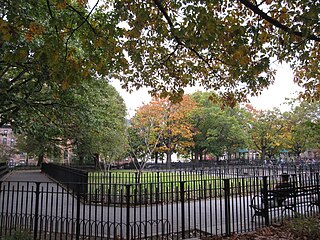
Clinton Hill is a neighborhood in north-central Brooklyn, a borough of New York City. It is bordered by the Brooklyn Navy Yard and Flushing Avenue to the north, Williamsburg to the northeast, Nostrand Avenue and Bedford–Stuyvesant to the east, St Marks Avenue and Prospect Heights to the south and southwest and Carlton Avenue and Fort Greene to the west.

Baldwin Wallace University (BW) is a private university in Berea, Ohio. Established in 1845 as Baldwin Institute by Methodist businessman John Baldwin, it merged with nearby German Wallace College in 1913 to become Baldwin-Wallace College.

Westland Mansion was the home of Grover Cleveland, the 22nd and 24th president of the United States, from his retirement in 1897 until his death in 1908. The house is located in the historic district of Princeton, New Jersey, and is a National Historic Landmark also known as the Grover Cleveland Home.
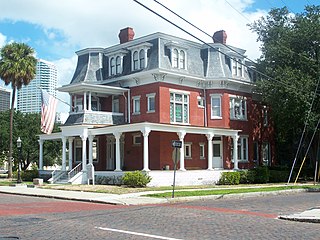
The Hutchinson House is a historic home completed in 1908 in Tampa, Florida, United States. It is a three-story brick building in the Second Empire architecture. The building includes a high mansard roof and large porch with tall Corinthian columns.

This is a list of the National Register of Historic Places listings in Franklin County, Ohio.
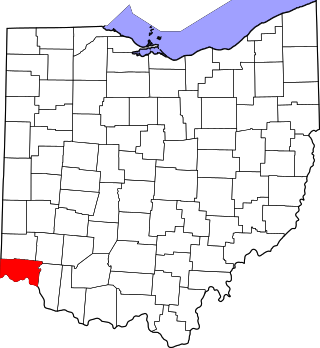
This is a list of the National Register of Historic Places listings in Hamilton County, Ohio.
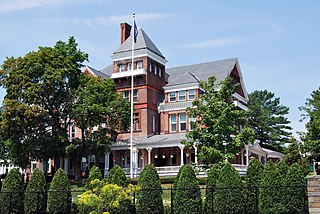
The New York State Executive Mansion is the official residence of the governor of New York. Located at 138 Eagle Street in Albany, New York, it has housed governors and their families since 1875.
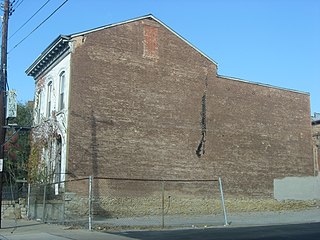
The Heinrich A. Rattermann House was a historic residence in the West End neighborhood of Cincinnati, Ohio, United States. Built in 1860, it was a brick building with a stone foundation and elements of iron and stone. It was the home of Heinrich Armin Rattermann from 1895 until his 1923 death. The most prominent German-American author in the history of the United States, Ratterman worked to solidify German-American culture; he sought to teach his compatriots their culture and produced a history of German Americans in Ohio.

This is a list of the National Register of Historic Places listings in Cleveland, Ohio.

The Phillip Gaensslen House is a historic house in Cleveland, Ohio, United States, located at 3050 Prospect Avenue east of downtown. Built in about 1870, the Italianate house features a primarily brick exterior and a stone foundation. As suggested by its name, the house was constructed for Phillip Gaensslen, who owned Cleveland's only German-language newspaper. After the Gaensslen family lived in the house, it served a succession of different organizations: after being a home for unwed mothers, the property was used as a church for a time. From the 1960s to the 1980s, on the other hand, it was a headquarters of a steel fabrication company.
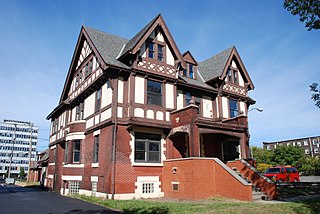
The Dr. William Gifford House is a historic Tudor Revival house in Cleveland, Ohio, United States. Located east of downtown, the house sits in a neighborhood of historic houses and is a part of the Upper Prospect Multiple Resource Area. It was designed by Cleveland architect William W. Sabin and built in about 1901. The Gifford House is actually atypical of Sabin's style: working in Cleveland from 1888 to 1923, he is known better as a designer of large public buildings, especially churches and police stations.
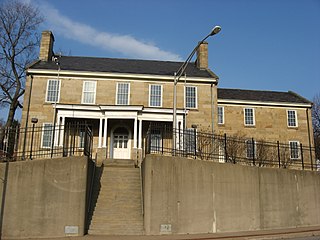
The Captain William Vicary House is a historic mansion in Beaver County, Pennsylvania, United States. Located at 1235 3rd Ave. in the borough of Freedom, the house lies along the community's main street above the Ohio River.

Charles Frederick Schweinfurth was an American architect in Cleveland, Ohio. His brother Julius Schweinfurth was also an architect and they did some projects as a partnership.

St. Augustine's Catholic Church is a historic church in Napoleon, Ohio, United States. Located on the edge of the city's downtown, two blocks away from the Henry County Courthouse, the church is a prominent landmark in Napoleon.

St. Michael's Catholic Church is a historic Catholic church in Mechanicsburg, a village in Champaign County, Ohio, United States. Completed in the 1880s, it served a group of Catholics who had already been meeting together for nearly thirty years. One of several historic churches in the village, it has been designated a historic site because of its well-preserved nineteenth-century architecture.
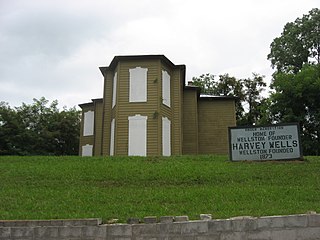
The Harvey Wells House is a historic residence in the city of Wellston in the southern part of the U.S. state of Ohio. Built in 1883, it was the home of Harvey Wells, a local entrepreneur who founded the city of Wellston in the 1870s with the goal of making it into the region's leading metropolis. Located on the A Street Hill, the house occupies one of the highest points in the city of Wellston.
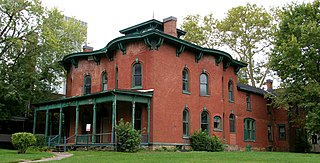
Cozad–Bates House, also known as the Cozad–Bates House Interpretive Center, is the oldest and only surviving pre-Civil War structure in University Circle, Cleveland, Ohio, located at the Mayfield Road and East 115th Street intersection. It is historically known for its involvement in the Underground Railroad. Abolitionist Andrew Cozad built the house in 1853 for his son Justus L. Cozad, who in 1872 added an Italianate front to the structure. Architecturally, it is a rare surviving example of Italianate-influenced residential architecture in America at that time, which includes a hipped roof, curved bay windows, paired eave brackets, and prominent belvedere. The house was listed on the National Register of Historic Places in 1974 and designated as a Cleveland Landmark in 2006.
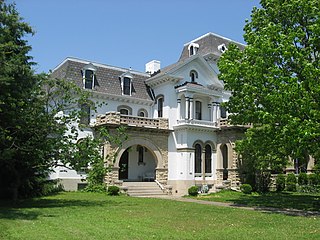
The Millen–Schmidt House is a historic residence in Xenia, Ohio, United States. Built in the late nineteenth century, it was named a historic site after surviving a massive tornado.






















